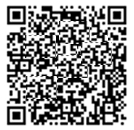[1] 国家卫生健康委办公厅. 国家卫生健康委办公厅关于印发中国结核病预防控制工作技术规范(2020年版)的通知[EB/OL].(2020-04-02)[2020-06-10].https://tb.chinacdc.cn/ggl/index_1.html.
[2] 郑国兴, 帖萍. 实施现代结核病控制策略对传染性肺结核患者发现与治疗效果的影响[J].中国药物与临床, 2020, 20(19):3290-3292.
[3] 徐彩红, 赵雁林. 构建智慧化网络助力结核病防治[J].中国防痨杂志, 2022, 44(3):215-218.
[4] 翁剑峰, 彭建明, 刘志东, 等.《手机一体化管理系统》在学校结核病防控中的应用效果评价[J]. 中国防痨杂志, 2020, 42(4):335-338.
[5] 李晓芬, 彭建明, 刘志东, 等. 采用《结核病防治手机一体化管理系统》进行微信转诊和随访的效果评价[J]. 中国防痨杂志, 2020, 42(8):858-862.
[6] 翁剑峰, 陈文杰, 刘志东, 等. 惠州市基于手机微信APP的结核病管理系统管理模式的实施效果评价[J].结核与肺部疾病杂志, 2023, 4(6):468-474.
[7] 吴铃铃, 周晓农, 贾铁武, 等. 卫生经济学评价技术在重要传染病防治中的应用研究进展[J]. 中国血吸虫病防治杂志, 2021, 33(3):311-316.
[8] 祖筱雯. 肺结核患者密切接触者预防性治疗的成本效果研究[D].北京:中国疾病预防控制中心, 2020.
[9] 中国药学会药物经济学专业委员会. 中国药物经济学评价指南2019版[Z]. 北京, 2019.
[10] 中华人民共和国国家统计局. 全国年度统计公报[EB/OL].[2024-02-29]. https://www.stats.gov.cn/sj/tjgb/ndtjgb/.
[11] 吴晓亮, 叶兆嘉, 谢旭, 等. 基于马尔科夫模型的深圳市60岁及以上人群接种流感疫苗的成本效果分析[J]. 中华流行病学杂志, 2022, 43(7): 1140-1146
[12] 苏瑾, 寿涓, 顾文钦, 等. 基于Markov链的上海市枫林社区骨质疏松全人群防治工作的成本效果分析[J]. 中国全科医学, 2024, 27(22):2789-2796.
[13] 李智, 周惠, 陈晓军, 等. 基于数字技术的结核病患者管理方法研究进展[J].中国防痨杂志, 2019, 41(9):1015-1020.
[14] 张金静, 杨云云, 彭大利. 利用新技术提高结核病患者治疗依从性的研究进展[J].中国全科医学, 2020, 23(1):114-119.
[15] 景睿, 曹艳民, 杨一军, 等. 电子药盒和手机微信APP对肺结核患者督导服药管理的应用研究[J]. 结核与肺部疾病杂志, 2020, 1(2):96-99.
[16] 杨洋. 微信管理模式应用于肺结核患者治疗管理中的效果分析[J]. 江苏卫生事业管理, 2023, 34(9):1304-1307.
[17] 张晓龙, 王斐娴, 傅颖, 等. 苏州市流动人口与户籍人口结核病诊断延误状况及影响因素[J]. 职业与健康, 2019, 35(18):2508-2511,2515.
[18] 谭卫国, 管红云, 吴清芳, 等. 流动人口结核病防控创新策略与实施效果[J/CD]. 新发传染病电子杂志, 2020, 5(3):145-149.
[19] 包亮亮. 基于决策树-Markov模型的密切接触者肺结核筛查策略的卫生经济学评价[D]. 新疆:新疆医科大学, 2023.
[20] 高胜男. 两种治疗方案治疗初诊多发性骨髓瘤患者的成本效果分析[D]. 河北:河北医科大学, 2018. |



